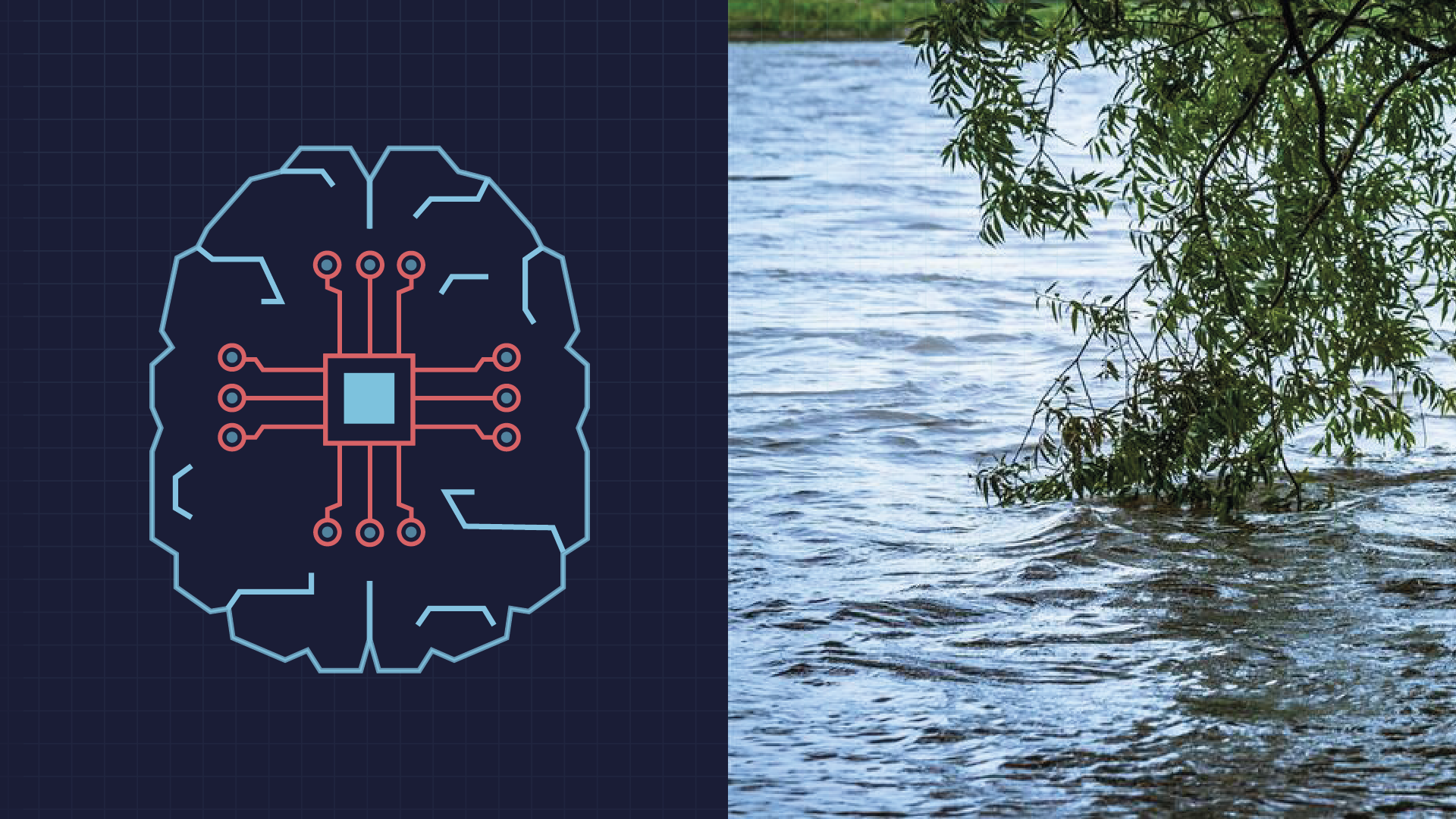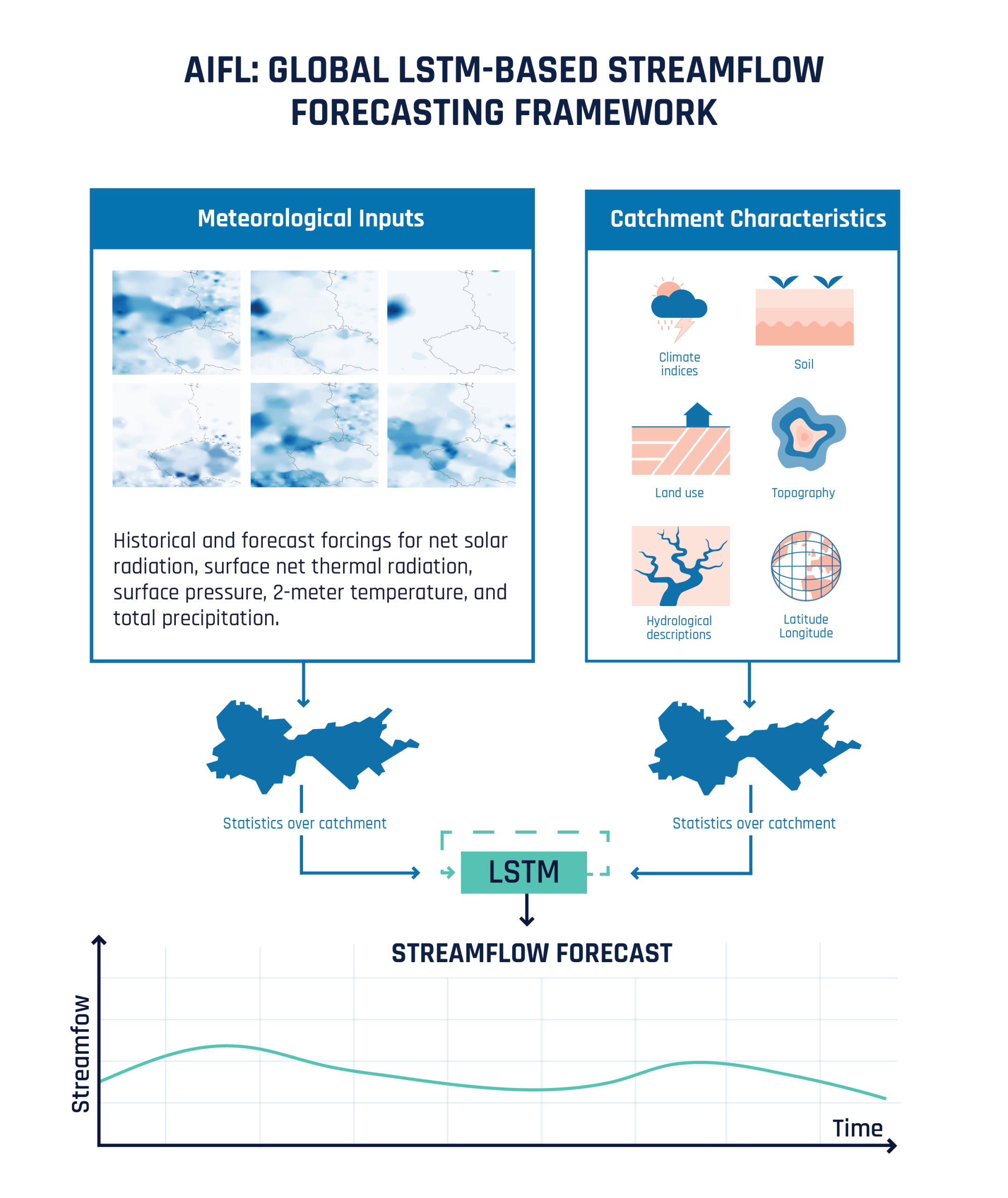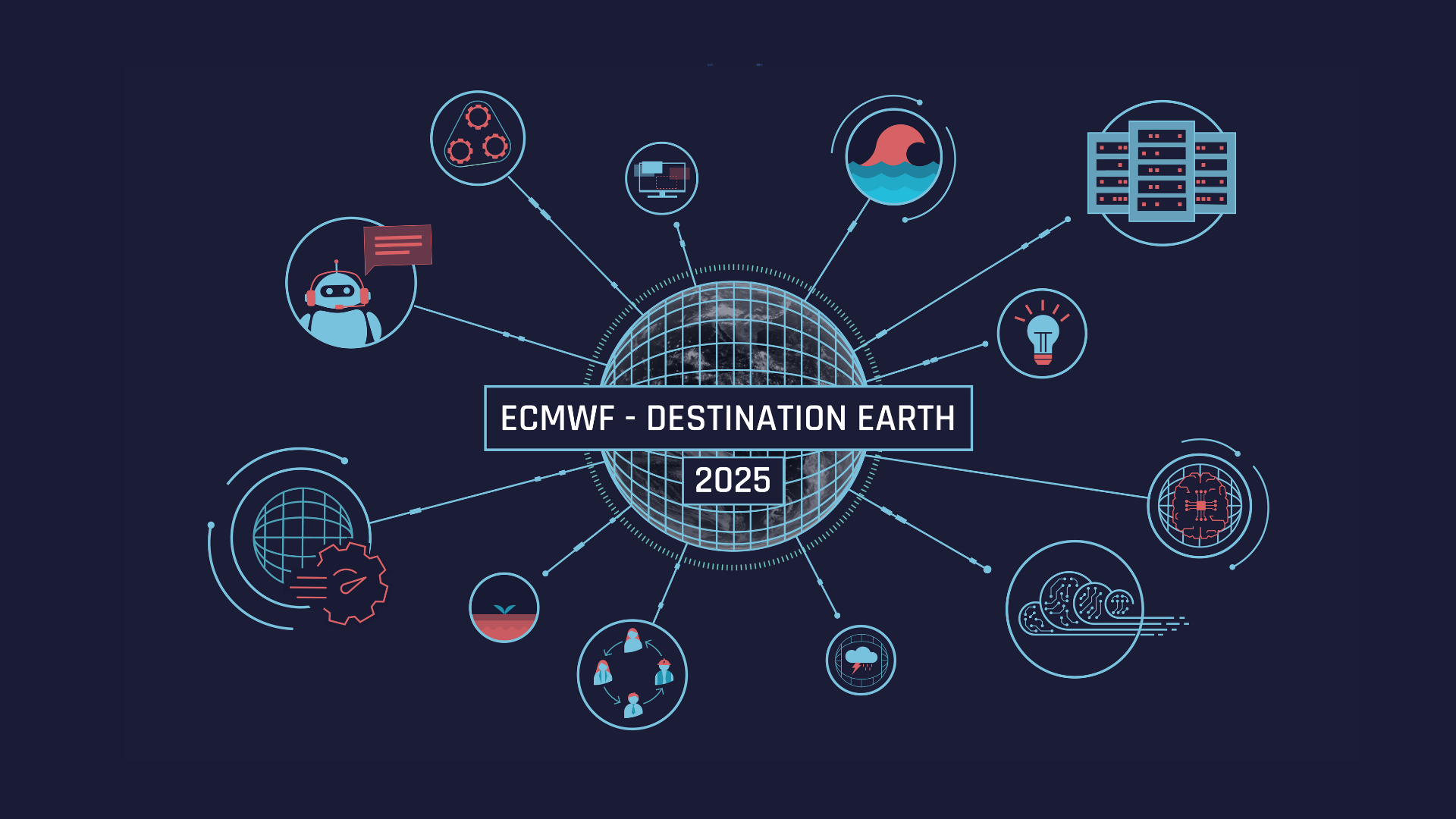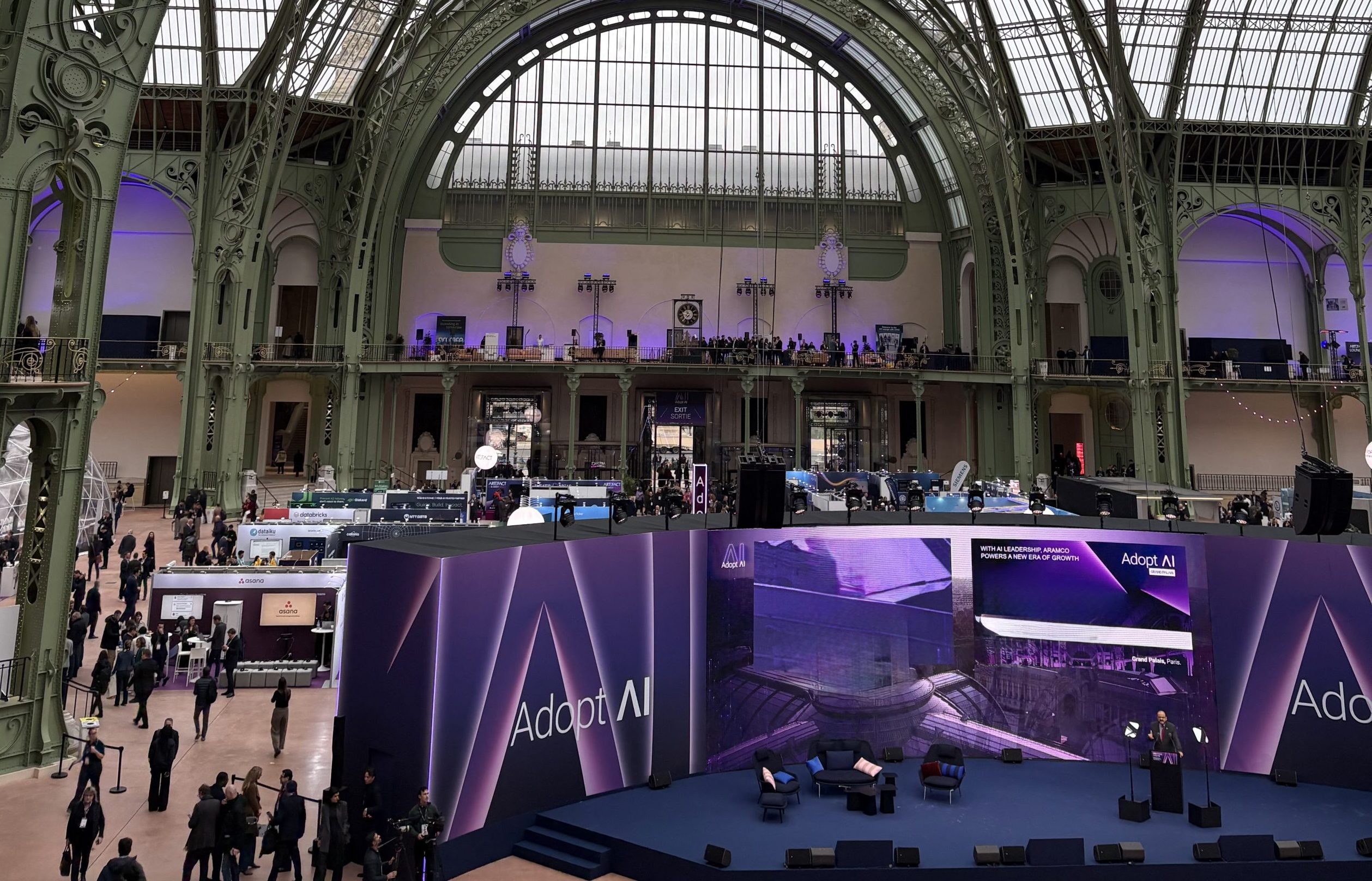
Developing machine learning (ML)-based Earth system model components is central to the AI activities implemented by ECMWF and their partners within the Destination Earth (DestinE) initiative of the European Commission. This blog series shares insights from experts building these components, highlighting their approaches and contributions towards a coupled ML-based Earth system model.
AIFL, a Global Deep Learning Model for Daily Streamflow Predictions

By Maria Luisa Taccari, ECMWF Scientist – AIFL Team
Flooding is one of the most frequent and damaging natural disasters worldwide. Yet, in many regions, predicting river discharge remains a challenge, especially where streamflow observations are scarce or non-existent.
The “AI for Flood Forecasting “ (AIFL) is a global deep learning model developed at ECMWF to predict daily streamflow at the catchment scale, including in ungauged basins. It is designed to produce fast, reliable streamflow predictions using publicly available data. Trained on thousands of river basins around the world, it learns the hydrological response of different landscapes to changing weather, enabling predictions across a wide range of climates and terrains.
Learning from global data
At the core of AIFL is a long short-term memory (LSTM) neural network, a type of model that excels at learning patterns in time series. The model was trained using Caravan, a community-driven dataset that brings together streamflow, meteorological inputs, and catchment characteristics for river basins globally.

During training, AIFL learns how precipitation, temperature, and other inputs translate into river discharge. It doesn’t need local calibration and can generalise well to basins it hasn’t seen before, which is especially important for parts of the world where no gauge data exists.
Designed for real-time predictions
To ensure the model works in real-time settings, we fine-tuned AIFL with meteorological forecasts from ECMWF’s Integrated Forecasting System, IFS. This allows the model to operate with the same data used in operational weather forecasting, delivering up to 10-day lead time streamflow predictions.
Once trained, the model runs quickly and can generate predictions for thousands of locations simultaneously. This makes it suitable for supporting flood preparedness when speed and scalability are essential.
We work at the confluence of hydrology and machine learning to extend flood predictions beyond traditional boundaries. My goal is to build models that learn globally, run efficiently, and deliver reliable predictions, especially in data-scarce regions where they are needed most. There is still much to explore and it is exciting to see this coming together in the context of DestinE.
Maria Luisa Taccari, ECMWF – AIFL
How well does it work?
So far, AIFL has shown strong performance across a wide range of basins. It captures seasonal cycles, event timing, and magnitude with skill comparable to regional models, even in places that weren’t included in the training data.


Two example discharge simulations for two basins in Spain during 2016, using ERA5 reanalysis as input to the global LSTM model. Observed streamflow (dashed) is compared against values simulated by the data-driven model (solid).
By using open global data and a single model architecture, AIFL avoids many of the limitations of traditional hydrological forecasting in ungauged regions. It is not perfect and doesn’t replace local models in well-instrumented areas, but it offers a powerful way to extend forecast coverage to places where other models can’t currently go.
What’s next?
This work to expand the application of ML to hydrology – an important component of the Earth system – is supported by the Destination Earth initiative of the European Commission. Early results show that global-scale streamflow prediction with machine learning is not only possible, but a promising tool for flood forecasting. The work will continue by expanding the model to cover more regions, testing higher-resolution time steps, and exploring how AIFL could support downstream decision tools to better anticipate flood risks.
Authors
Maria Luisa Taccari and the rest of the AIFL team (Christel Prudhomme, Cinzia Mazzetti, Kenza Tazi, Andreas Grafberger, Oisin Morrison, Corentin Carton de Wiart, Juan Pereira Colonese, Mohamed Azhar, Margarita Choulga, Matthew Chantry, Florian Pappenberger). The authors would also like to thank colleagues working on other ML-Earth System components at ECMWF, in the framework of Destination Earth, for technical advice and support.
Destination Earth is a European Union funded initiative launched in 2022, with the aim to build a digital replica of the Earth system by 2030. The initiative is being jointly implemented by three entrusted entities: the European Centre for Medium-Range Weather Forecasts (ECMWF) responsible for the creation of the first two ‘digital twins’ and the ‘Digital Twin Engine’, the European Space Agency (ESA) responsible for building the ‘Core Service Platform’, and the European Organisation for the Exploitation of Meteorological Satellites (EUMETSAT), responsible for the creation of the ‘Data Lake’.
We acknowledge the EuroHPC Joint Undertaking for awarding this project strategic access to the EuroHPC supercomputers LUMI, hosted by CSC (Finland) and the LUMI consortium, Marenostrum5, hosted by BSC (Spain) Leonardo, hosted by Cineca (Italy) and MeluXina, hosted by LuxProvide (Luxembourg) through a EuroHPC Special Access call.
More information about Destination Earth is on the Destination Earth website and the EU Commission website.
For more information about ECMWF’s role visit ecmwf.int/DestinE
For any questions related to the role of ECMWF in Destination Earth, please use the following email links:


